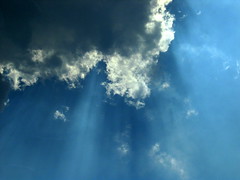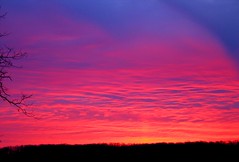Pittsburgh Symphony/Heinz Hall as viewed from outside the grand tier seating area and down to the stage where bokeh shows a harp and more:
Alliteration
In symphony season soon to start
I snapped a shot from stage to sight
bokeh harp bore better gold
than token thus with grand tier right
You see this season begins with a preview concert, and and what better way to begin the season, but with a 'best of the season,' complete with general seating where we all pick our own seats, first come first serve. It was sort of a game of musical chairs this evening, both literally and figuratively, in more ways than one. We would hear Mahler: Symphony No. 1 in D Major, 2nd movement, but then the music would stop, and one fewer chair would remain (figuratively). With this movement I discovered that the Grand Tier seating area of Heinz Hall really does have better acoustics for the horns and woodwinds, which always seemed to be over-damped a bit when I sat on the main floor last year. To continue with my metaphor, we would later hear Dvorak: Symphony No. 9 in E minor, "From the New World", 1st movement, and again the music stopped, another chair was removed, and the audience clapped. During a regular concert, if the audience claps after the 1st movement or anything but the last movement, it becomes a point of etiquette, not knowing the right time to applaud. And next, and most deliciously, we had the Mozart: Symphony No. 38 in D Major, "Prague", 3rd movement, (here we see Manfred Honeck with the same movement, one that I like to think of as a musical joke). Perhaps Mozart was playing musical chairs with this symphony as it only has 3 instead of the typical 4 movements.
Now of course every time the orchestra paused, Jim Cunningham of WQED 89.3, our host for the evening, would eloquently introduce the next piece, and behind him they would be literally rearranging the chairs, as in the allegory of musical chairs. His purpose and their goal was to try to sell season subscriptions to many of the attendees who were not current subscribers. Along the way he told a few good jokes and somehow we all became familiar with German Jelly Donuts and the wonderful waltz by Strauss: "Im Krapfenwaldl," complete with coo-coo and bird sound effects! The final piece of the evening was Beethoven: Symphony No. 7 in A Major. 4th movement, one of my favorite pieces of all time. I envisioned I was a bird soaring high above the land, in tune to the music, up, over a rainbow, where skies are blue.
Several other single movement

compositions were played this evening, but I don't want to forget to mention one I really liked, because the soloist poured her heart and soul into the violin: Bruch: Scottish Fantasy for Violin and Orchestra, 4th movement, Laura Motchalov, violin; it was simply beautiful.
One more interesting note, on my way home, with my daughter and her friend, they with their ipods, and myself with WQED on the radio, I was listening to a wonderful piece I've never heard before by Gottschalk: Symphony No. 1, A Night in the Tropics, I & II Utah Symphony Orchestra/Abravanel. And the girls were listening each to their own separate music, and singing out loud, Eat It by "Weird Al" Yankovic and Aly & AJ - Potential Breakup Song. What a symphony of sound!





























 I find that when being introduced to music previously unheard, the best way to persuade my ears as to the profundity of the experience is with live music. That's why I urge everyone to attend for themselves, find out what I'm referring to by listening at the concert. The radio is nice, but it's not the same thing as being there.
I find that when being introduced to music previously unheard, the best way to persuade my ears as to the profundity of the experience is with live music. That's why I urge everyone to attend for themselves, find out what I'm referring to by listening at the concert. The radio is nice, but it's not the same thing as being there.















